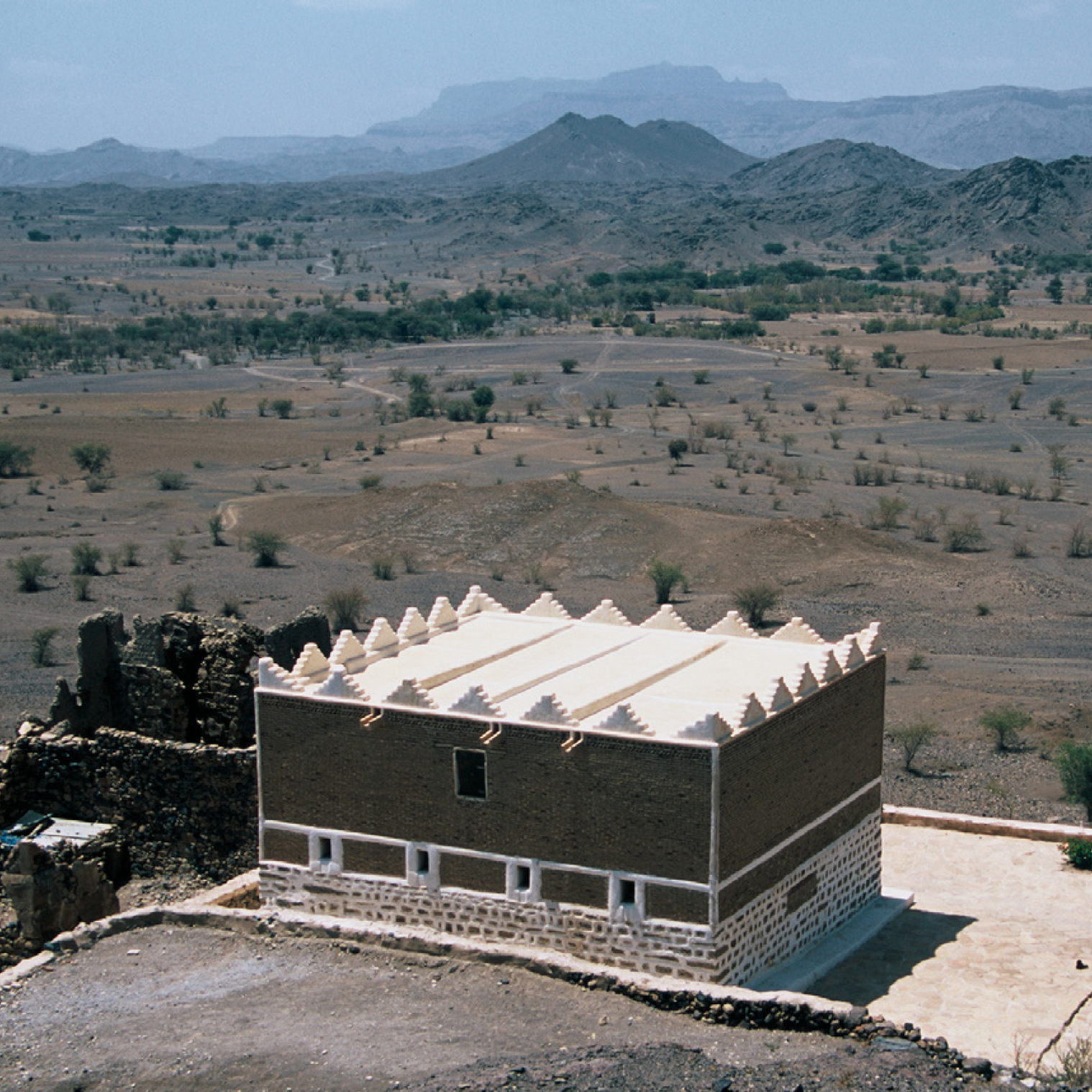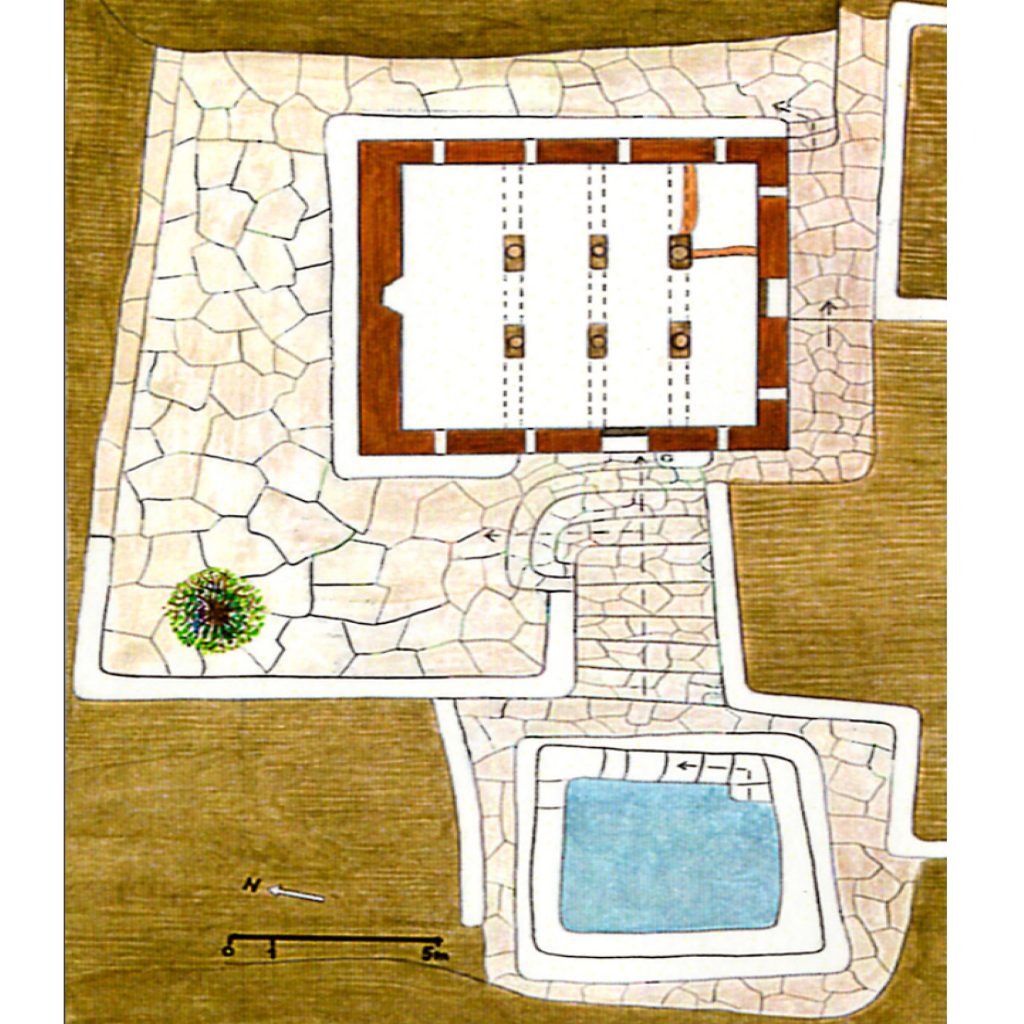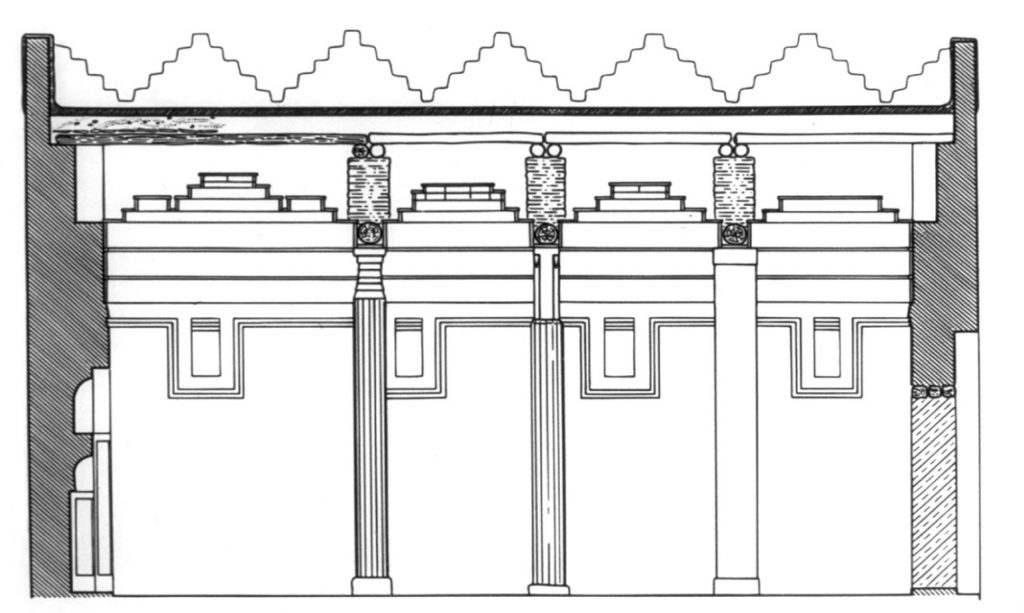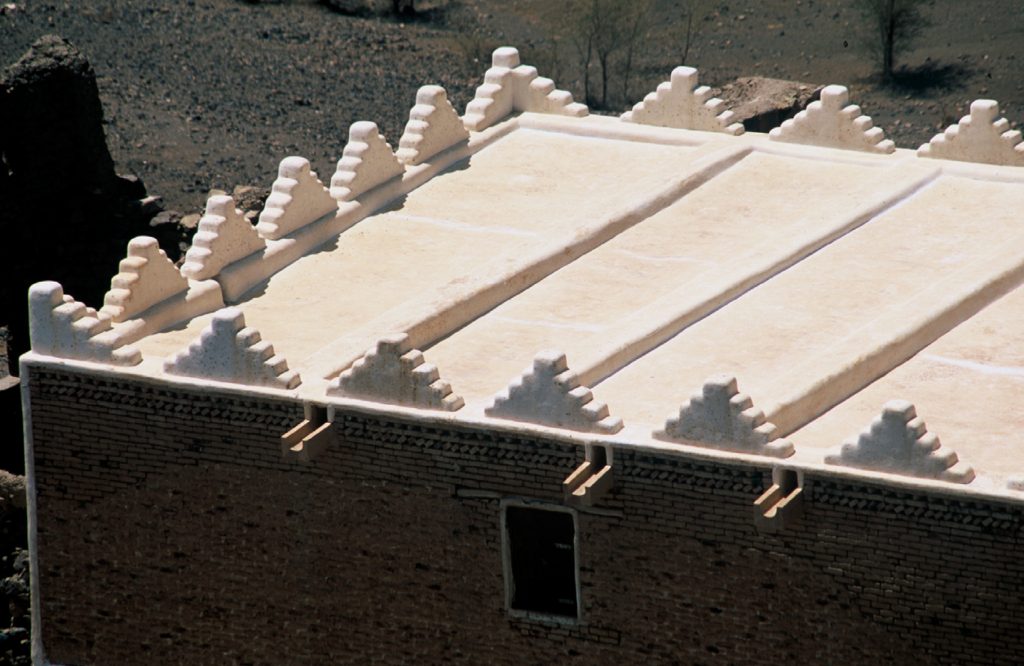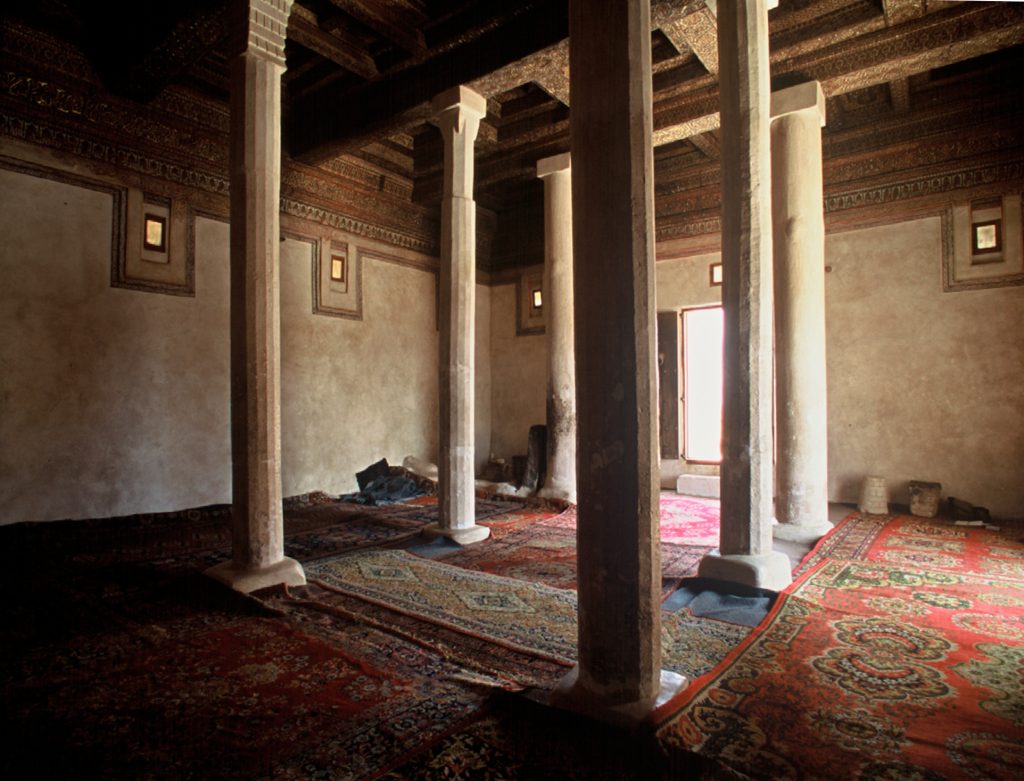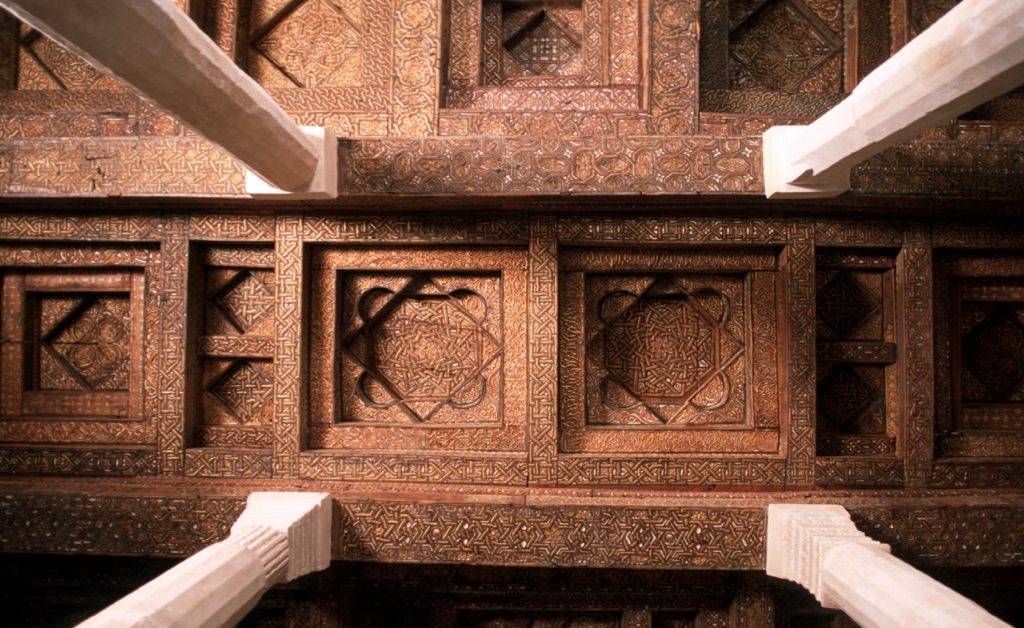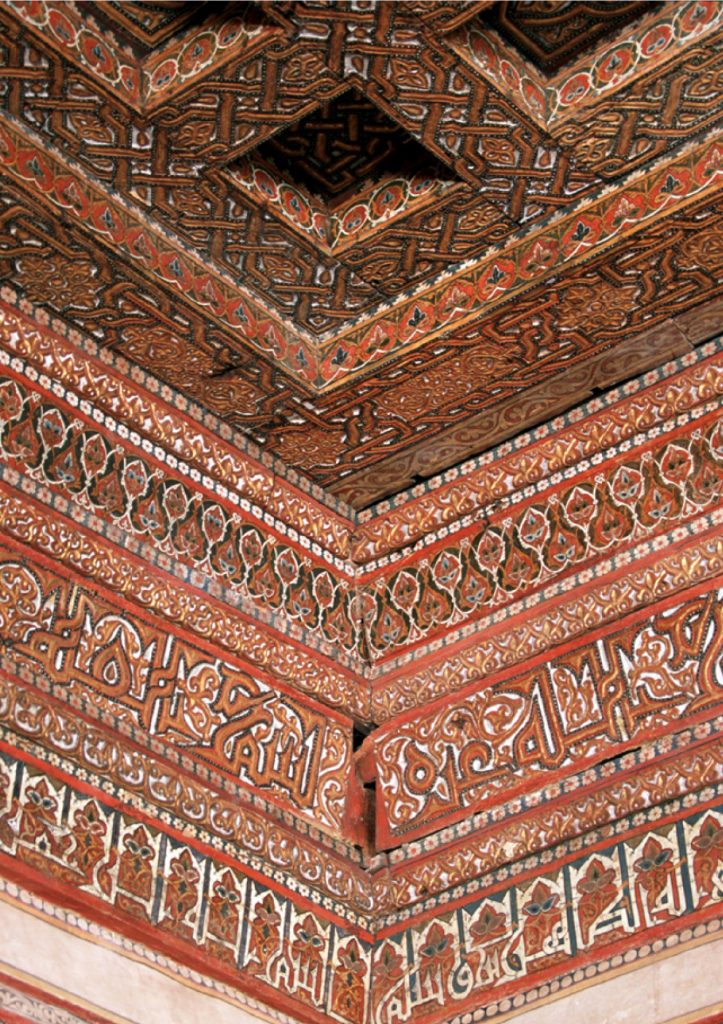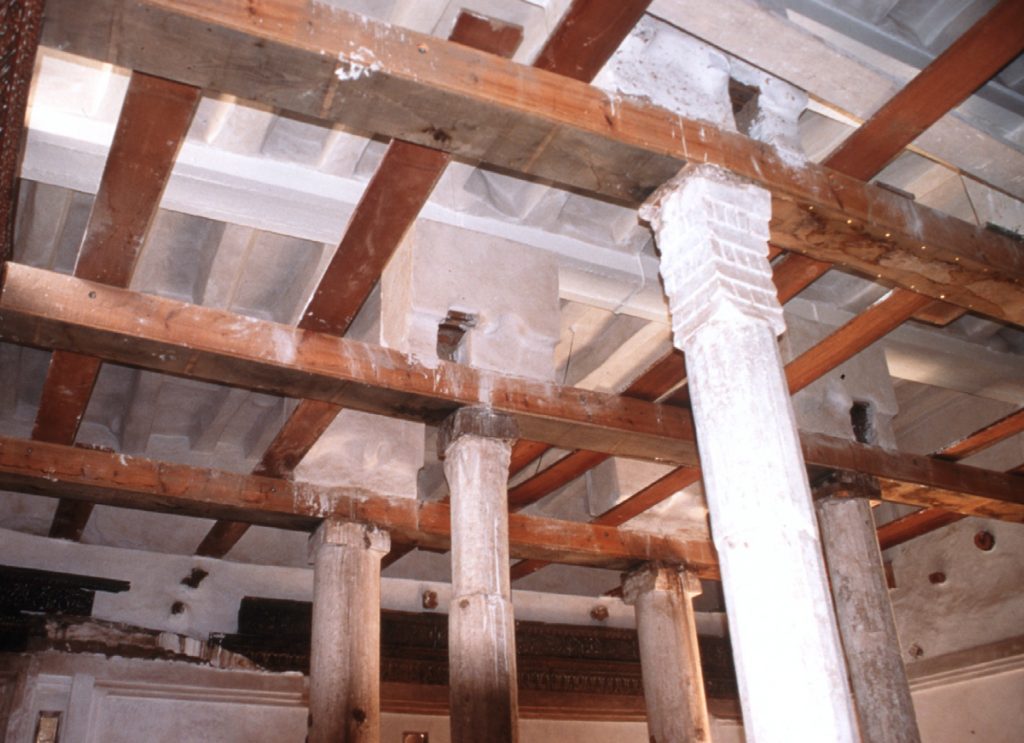Al-Abbas Mosque is situated 40 kilometres south-east of Sana’a and 2 kilometres from the village of Asnaf. Dating back to the twelfth century, the mosque is cubic in form, and measures only 100 square metres in area.
La mezquita de Al-Abbas está situada cuarenta kilómetros al sura de la ciudad de Sanaa y a dos kilómetros de la villa de Asnaf. Se construyó en el siglo XII, tiene una forma cúbica y apenas 100 metros cuadrados de superficie construida.
Besides its value as an ancient monument, the mosque has particular historical significance since we know its exact date of construction, its founder and its builder. In addition, it stands out among Yemen’s cubic-shaped mosques because of its exceptional ceiling, which has survived intact more than eight hundred years.
Más allá de su valor como monumento histórico, la mezquita tiene un significado histórico particular ya que se conoce la fecha exacta de su construcción y quien la construyó. Además, destaca dentro de las mezquitas cúblicas de Yemen debido a su techo que ha sobrevivido intacto más de ochocientos años.
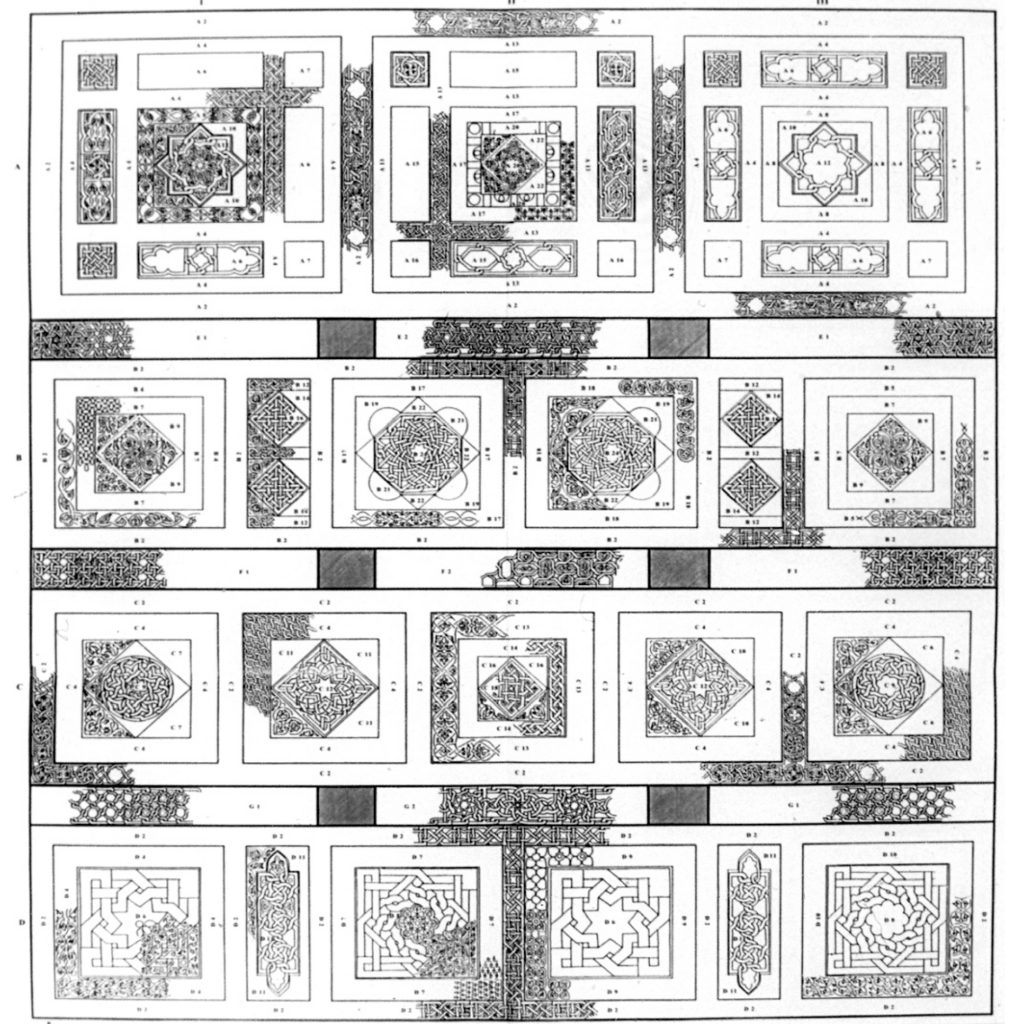
Of particular interest is that fact that the roots of this type of cubic mosque go back to pre-Islamic temples in the Arabian Peninsula, such as the Ka’bah (in Mecca). In Al-Abbas Mosque the presence of some ancient relics from other sites, including an inscription from a pre-Islamic building, would seem to confirm this link.
Es interesante el hecho de que la mezquita cúbica tiene sus orígenes en una tipologías preislámica, particularmente los templos preislámicos de la Península Arábiga como la de Ka´bah en la Meca. En la mezquita de Al-Abbas, la presencia de algunas reliquias provienen de otros lugares. Por ejemplo, hay una inscripción de un edificio preislámico que parece confirmar este vínculo.
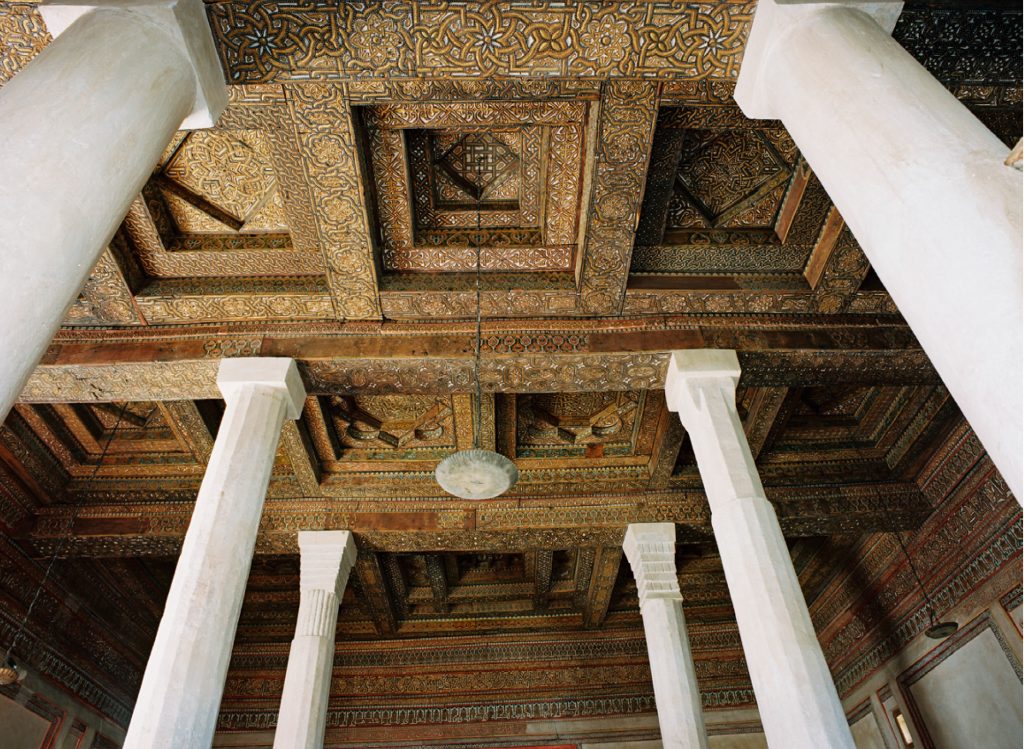
The project to restore the mosque began in 1986. The roof was in a state of deterioration and other structural repairs were needed. The first priority was to preserve the ceiling, which was temporarily removed to the National Museum at Sana’a for conservation work (it was replaced in 1996). The repairs to the mosque structure were carried out in 1995 and 1996. The restoration project has allowed this important monument of cultural history to be preserved for future generations.
El Proyecto para restaurar la mezquita comenzó en 1986. La cubierta que se encontraba en un evidente estado deterioro, así como otras reparaciones estructurales eran los elementos que necesitaban más cuidad. La primera prioridad fue preservar el techo que había sido llevado temporalmente al museo nacional de Sanaá para ser conservado. Las reparaciones estructurales de la mezquita se llevaron a cabo entre 1995 y 1996. El proyecto de restauración permitió a este monumento ser preservado para las próximas generaciones.
